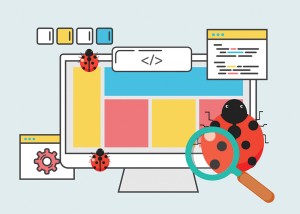API Testing

An application programming interface, or API, works to link an application to the web and to other APIs. In order to debate API and Web services testing, we need to first understand what is an API and how it works. So, explore this article and know more about it.
An application is made of three vital parts that ideally should be able to work and communicate in a segmented way, so one could be swapped out for another:
Data Tier: Where data is retrieved from the database and file system and then stored.
Logic Tier: In this processes, the data between the layers, coordinating the application, processing commands, and takes logical decisions. This layer is made of the API.
Presentation Tier: This top layer of the app is the user interface, which converts tasks into something the user understands.
APIs allow organizations to become more agile, for things to go mobile, and everything to work together in a streamlined, integrated way.
Therefore, API testing is testing that APIs and the integrations allows work in the ideal manner. This form of testing focusses on using software to make API calls in order to receive an output before perceiving and logging the system’s response. This tests that the API returns a correct response or output under variable conditions.
However, there also could be no output at all or something completely unexpected occurs. This makes the tester’s role crucial to the application development process. As, APIs are the central hub of data for several applications, data-driven testing for APIs can helps to increase test coverage and accuracy.
In testing the API directly, specifying pass/fail circumstances is slightly more challenging. However, in comparing the API data in the response or in comparing the behaviour after the API call in another API would help the tester to setup ultimate validation scenarios.
WHY IS IT IMPORTANT?
All forms of software are essential to recognize bugs and discrepancies both when releasing a product and it continues to work when it is out in the wild. It is very clear that the risk of putting an insecure product on the market is greater than the cost to test it.
Let’s see some instances of common security tests that API could be vulnerable to
The API is what gives the value to the application. It is what makes our phones “smart” and streamlines business processes. If an API does not work successfully, it will never be adopted, irrespective if it is a free and open API or one that charges per call or group of calls. If an API breaks because errors were not spotted, it will not break a single application but also a chain of business processes joined to it.
What You Need to Know to Start API Testing
The first part of API testing contains setting up a testing environment, with the required set of parameters around the API. This involves configuring the database and server for the application’s requirements. Once the user sets up his/her API testing environment, make an API call right away to make sure nothing is broken before the user starts more thorough testing.
The user can also start combining the application data with their API tests to ensure that the API performs as likely against possible known input configurations.

